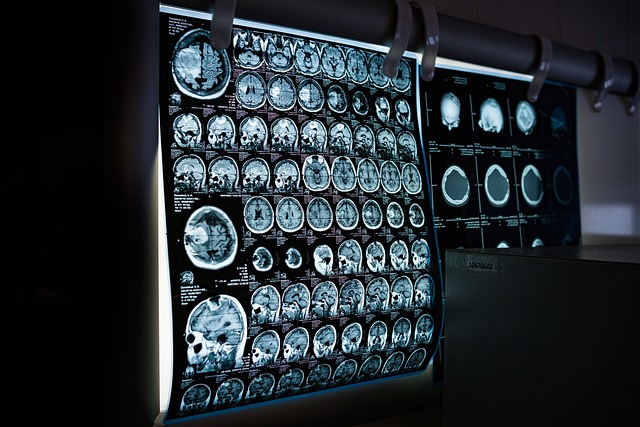Gene Therapy’s Role in Treating Spinal Muscular Atrophy
Gene therapy is revolutionizing the treatment of Spinal Muscular Atrophy (SMA) by addressing the root cause of the disease. By replacing faulty genes, patients now have access to life-changing therapies that improve motor function and slow disease progression.

Gene therapy represents a significant milestone in the treatment of spinal muscular atrophy, a rare genetic condition that impacts the nervous system and muscle function. This innovative medical approach targets the underlying genetic cause of the disease rather than simply managing symptoms. For individuals diagnosed with SMA and their families, these developments offer new perspectives on treatment options and long-term outcomes.
Spinal muscular atrophy occurs when a specific gene called SMN1 is missing or mutated, resulting in insufficient production of the survival motor neuron protein. This protein is essential for maintaining healthy motor neurons, which control voluntary muscle movement. Without adequate levels of this protein, motor neurons deteriorate, leading to muscle weakness, difficulty breathing, and impaired mobility. The severity of symptoms varies depending on the type of SMA, with some forms appearing in infancy and others manifesting later in childhood or adulthood.
How Gene Therapy Works for SMA
Gene therapy for spinal muscular atrophy involves delivering a functional copy of the SMN1 gene directly into the body’s cells. The most widely used approach employs a modified virus called an adeno-associated virus as a delivery vehicle. This virus has been engineered to be harmless while retaining its ability to enter cells efficiently. Once administered through a single intravenous infusion, the viral vector carries the functional gene to motor neurons throughout the body.
The introduced gene begins producing the survival motor neuron protein that the body lacks. This protein helps preserve existing motor neurons and may even improve their function. The treatment is typically administered early in life to maximize its effectiveness, as it works best when motor neurons have not yet experienced significant damage. Clinical studies have demonstrated that patients receiving gene therapy often show improvements in motor function, breathing capacity, and overall survival rates compared to historical outcomes.
The procedure requires careful patient selection and monitoring. Medical teams evaluate factors such as age, disease severity, and the presence of antibodies that might interfere with the viral vector. Post-treatment monitoring is essential to assess response and manage any potential side effects, which can include liver enzyme elevations and other immune-related reactions.
Breakthroughs in SMA Treatment
The approval of gene therapy for spinal muscular atrophy marked a turning point in rare disease treatment. Clinical trials have shown remarkable results, particularly in infants treated before symptoms become severe. Some patients who received treatment early have achieved developmental milestones that would have been impossible without intervention, including sitting independently, standing, and walking.
Beyond gene therapy, other therapeutic approaches have emerged that complement or serve as alternatives to this treatment. Antisense oligonucleotide therapies work by modifying how the backup SMN2 gene functions, increasing production of functional protein. Small molecule therapies take a similar approach through a different mechanism. These options provide flexibility in treatment planning, allowing healthcare providers to tailor interventions to individual patient needs.
Research continues to expand our understanding of optimal treatment timing, combination therapies, and long-term outcomes. Studies are investigating whether gene therapy can benefit older patients or those with more advanced disease. Scientists are also exploring ways to enhance the durability of treatment effects and reduce potential complications.
The Future of Gene Therapy for SMA
The future of gene therapy for spinal muscular atrophy holds considerable promise as researchers refine existing techniques and develop new approaches. Next-generation vectors may offer improved targeting of motor neurons with reduced immune responses. Scientists are investigating ways to enable repeat dosing, which current gene therapies do not allow due to antibody development against the viral vector.
Newborn screening programs are expanding globally, enabling earlier diagnosis and treatment initiation. Early intervention maximizes the potential benefits of gene therapy by preserving motor neurons before irreversible damage occurs. This shift toward preventive treatment represents a fundamental change in how we approach genetic diseases.
Combination therapy strategies are under investigation, examining whether using gene therapy alongside other treatments could produce superior outcomes. Researchers are also studying biomarkers that can predict treatment response and help identify patients most likely to benefit from specific interventions. Gene editing technologies like CRISPR may eventually offer the possibility of correcting the genetic defect directly within the patient’s own cells.
Accessibility remains a critical consideration for the future. Efforts to streamline manufacturing, reduce costs, and expand insurance coverage aim to ensure that eligible patients worldwide can access these life-changing treatments. Patient registries and long-term follow-up studies will continue to provide valuable data on safety and effectiveness over decades.
Conclusion
Gene therapy has fundamentally altered the treatment landscape for spinal muscular atrophy, offering hope where few options previously existed. As research advances and clinical experience grows, these therapies continue to evolve, potentially benefiting more patients across different age groups and disease severities. While challenges remain regarding accessibility and long-term outcomes, the progress achieved represents a remarkable achievement in medical science and provides meaningful improvements in quality of life for individuals affected by this condition.
This article is for informational purposes only and should not be considered medical advice. Please consult a qualified healthcare professional for personalized guidance and treatment.




